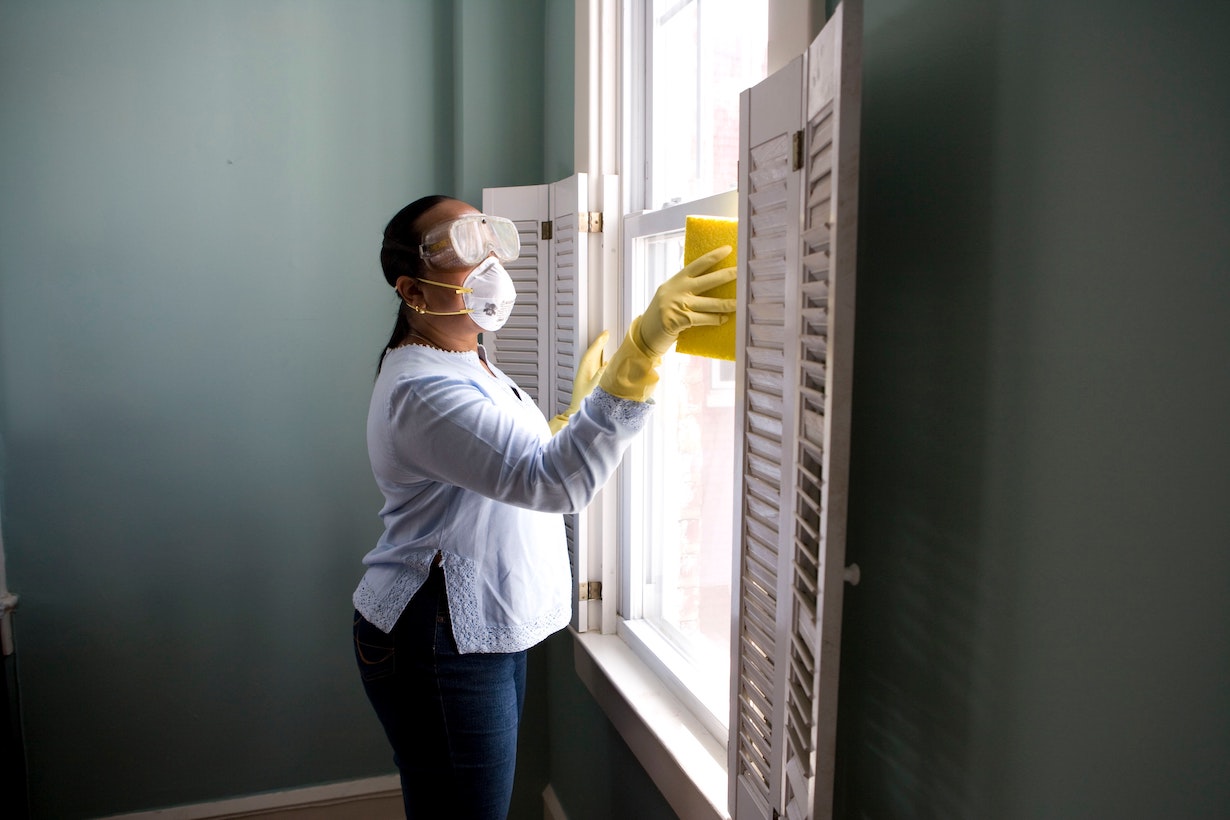Tenant Rights: Pest and Rat Infestations in Rented Homes
When it comes to infestations in rental properties, be it rats, mice, bed bugs, or cockroaches, the question of who is responsible isn't entirely cut and dried. With some infestations, it is virtually impossible to determine how, when and from where it began.
To provide as much clarity as possible on this subject, below you will find an outline of the legal responsibilities of landlords and tenants, a range of common scenarios and how best to handle them, and answers to some frequently asked questions.

What are the most common UK pest infestations in rented properties?
According to leading pest control company, Rentokil, the most common UK household pests are:
Mice
Active all year, house mice nest in quiet, warm places such as wall cavities or loft spaces with entry points. Their constant gnawing damages furniture, and they chew through packaging to access food sources. A mice infestation can also spread disease. This is why it's super important to not leave food out for good housing health.
Moths
The common Clothes Moth can be a nuisance. They lay their sticky eggs on natural clothing materials, and their caterpillar larvae damage carpets, clothes, and upholstery by eating them.
Rats
The most common rat in the UK is the Brown Rat. Signs of a Brown Rat infestation include droppings and smear marks, and teeth marks from them chewing on electric cables (which can become a significant fire hazard). They are also disease spreaders, so if you can see dead rats or believe you have a rat problem in your rented home, get in touch with your landlord to arrange a pest control contractor to have a thorough inspection and resolve the pest issue.
Bed Bugs
These nasty little critters feed on human blood and spread very quickly. Despite their name, they can be found in other cracks and crevices, although they most commonly reside in beds. It can be hard to identify the presence of bed bugs, as the bite marks they leave closely resemble a skin rash. Bed bugs can enter the property via contaminated luggage or a visitor's clothing. Dark spots on fabrics and bedsheets that look like reddish, rusty stains can be a sign of bed bugs having been crushed, and their excrement bled onto the material.

Wasps
Mostly a problem in the garden, wasps can enter the home through open windows, and their nests (which can contain more than 25,000 wasps) can be found in trees and bushes, as well as in wall cavities and lofts.
Flies
Both fruit flies and bluebottles can carry a variety of diseases, including bacteria that cause food poisoning.
Ants
Ant nests are typically located under paving and in other warm, dry soil and lawns. They enter the house in search of food sources.
Spiders
Spiders in the UK are typically harmless and can even be beneficial due to their love of eating mosquitoes and flies. Nevertheless, they are often feared and considered pests.
Cockroaches
Cockroaches love warm houses, wall cavities, and kitchens with plenty of food sources. They tend to come out after dark and can also carry diseases. The original cause of a cockroach infestation is particularly hard to determine, as they may have entered the home via luggage or other personal belongings contaminated with cockroaches or their eggs. Equally, they may have arrived from neighbouring properties.
Woodworm
This term covers a variety of wood-boring beetles. The adults lay their eggs in wood cracks, infesting furniture, floorboards, beams, etc.

Silverfish
These critters thrive in wet conditions, so properties with damp issues can experience an influx of silverfish. They can cause damage to books, documents, and leather furniture, as well as the wallpaper that they also feed on.
Tenants should ideally never sign a lease until they have inspected the property in person, with a keen eye out for any signs of infestation. If you do spot anything but have your heart set on the property, you can request that the landlord deal with the infestation and any subsequent repairs before signing a lease or moving in.
Legal responsibilities for landlords regarding pest control
Let's start with the law. As per the Prevention of Damage by Pests Act 1949, landlords can be served with a statutory notice instructing them to eradicate any pests causing issues for tenants and/or neighbours at their property.
Ultimately, landlords are required by law to provide and maintain healthy living conditions for their tenants. Furthermore, they must be seen to attend to any appropriate repairs in a timely manner to ensure that the disrepair does not cause or worsen an infestation.
When it comes to pest control responsibilities, landlords (as well as Housing Associations and RSLs - Registered social landlords) are responsible for adequately pest-proofing their properties. In cases where the property is located in an area that carries a high risk of seasonal pest infestations, they must also sign a contract to guarantee that regular pest treatments will be carried out.
A pest infestation can bring about a range of risks. They not only have the potential to expose humans to disease. Most vermin species can also cause significant damage to a property and personal belongings, contaminate food and potentially destroy reputations, both personal and commercial.
It is important to note here that landlords are not only responsible for the healthy condition of their property, but also for any 'public health' issues caused as a result of a pest infestation of said property. This extends to circumstances in which a tenant reneges on their responsibility to take proper care of their rented property and subsequently puts other residents and neighbours at risk.
What about the council or local authorities?
Councils in the UK are able to serve an enforcement notice to any landlord that refuses to remedy a pest infestation in their property. If the landlord continues to take no action and the council or local authority arranges an extermination procedure, they will legally force the landlord to pay for all costs involved, including any administrative expenses.
Not all local councils are obliged to carry out pest control services and treatments on behalf of private landlords and social landlord tenants or those living in housing association properties. This can even be the case regardless of whether the tenants are on Housing or Council Tax Benefits. In some instances, local councils or the local authority will only get involved and provide a pest control service if they deem it necessary to avoid any real and present threats to the health of other residents.
In what way are tenants responsible for pest control?
There are some instances in which the tenant is responsible for investigating and treating an infestation. Typically, a tenant will be responsible when they either:
Delay necessary pest treatments from being carried out
Refuse to allow extermination and pest proofing services to be conducted
Fail to notify their landlord of an infestation issue in a timely manner
Where a tenant has attracted vermin or other pests into their rental due to negligent behaviour, and a Health Officer's investigation supports this determination, the tenant can be held fully responsible for the issue and obligated to resolve it at their own cost.
Essentially, in any case in which the tenants have clearly and deliberately failed to address or made an infestation worse, they may be held liable for any damages and ordered to cover the costs of having pest control services carried out.
What if the infestation was present before the tenant moved in?
It can be hard to determine for certain when an infestation first began, as some are not detected until they have developed significantly.
That said, it is always a tenant's obligation to inform their landlord of any possible infestation as soon as it has been identified. It is also advisable that a tenant accompany this notification with photographic or video footage evidence of the signs of infestation.
How should I inform my landlord of an infestation?
Firstly, review the specifics of your lease agreement to make sure that responsibilities regarding pest control are clearly defined. Once you are sure that the issue is the responsibility as per your agreement, write a letter to your landlord including the following information:
Outline your name and address clearly, as your landlord may let multiple properties out
Give details of the issue, including when you first noticed the problem, what signs are present, and how severe the infestation is. You should also ideally include photographic or video evidence where possible
Make a clear request for your landlord to remedy the issue, including the need for pest control treatment and any repairs that may be required to avoid a repeat issue
Especially if you have a landlord who is hard to negotiate with or has ignored any previous correspondence, make it clear what you will do in the event that they ignore your requests. This may be reporting the issue to the local council, ending your tenancy agreement early, or taking legal action
What if the landlord refuses to remedy the problem? Is the landlord responsible?
If a landlord refuses to investigate or treat an infestation, the first step is to review the tenancy agreement to ensure there are no relevant clauses.
Tenancy agreements can sometimes clearly state who is responsible for infestations and pest control, and both parties must adhere to whatever is in the document. However, in the absence of any relevant clauses, the parties should try to reach an amicable agreement as to who is responsible for what. Most tenancy agreements only state that it is a landlord's duty to provide a habitable property, and a tenant's responsibility to keep the property in a sanitary state.
Suppose no clauses outline any specifics, and a landlord refuses to remedy an infestation. In that case, tenants should consider consulting with an attorney to investigate further who is legally responsible and potentially take further action. Tenants can also report the issue to their local council, and an environmental health officer will attend the property to determine who should take care of the problem.
Should a tenant report an unresolved infestation to the council?
It is imperative that a tenant attempt to resolve the issue directly with their landlord before reporting it to local council. One of the avenues of investigation the council will carry out is whether the infestation has been lawfully reported to the landlord.
Failing to take action in this order will likely result in the council referring it back to the landlord anyway, thus elongating the process and worsening the issue in the meantime.
So long as the circumstances fit the council's guidelines, they will serve the landlord with an enforcement notice to have the pests removed. That said, the council can also serve the tenants with such a notice if they deem it an appropriate determination of responsibility given the circumstances.
Council will attempt to resolve the problem between both parties in an amicable way. Still, ultimately the party they deem responsible will eventually be forced to remedy the issue if no agreement can be reached.
What if the infestation was caused by disrepair?
Neglecting to keep up with a property's repair work is one of the primary causes of rodent infestations. Unless otherwise agreed upon, the landlord is always the one legally responsible for causing an infestation resulting from disrepair if the disrepair was present before the tenants moved into the property.
This is why it is essential that tenants carefully inspect the property prior to moving in and have any areas of disrepair addressed before they sign a lease or move in.
Particularly in the winter months, a variety of pests seek the shelter and warmth of an accessible property, and any structural defects such as cracked external walls and broken roof tiles can make it easy for them to enter.
For the most part, the landlord should fix such structural issues, and therefore any subsequent need for pest control would also be their responsibility. However, suppose an infestation, such as rodents, is caused by a tenant leaving excessive food waste around and failing to dispose of rubbish bags properly. In that case, the responsibility will likely fall on their shoulders.
Should a property be in a good state of repair when the lease is signed, and occupancy begins, the tenant becomes responsible for keeping the home in a good condition during their tenancy. This includes informing landlords of any damage or need for repair work to be carried out, as well as notifying them promptly of any damage resulting from pest infestation.
If a tenant fails to inform their landlord of the need for repair work to be carried out as soon as it is noticed, they may become responsible for the repairs.
Can housing associations be responsible for pest control?
Each property differs when it comes to the responsibility falling on the housing association. Typically, housing associations are responsible for actioning pest control treatments in the case of neglect or disrepair resulting from work being carried out on-site, or if the infestation is present in communal areas and inside multi-dwelling buildings.
That said, a tenant may still be liable in a multi-dwelling complex if it is deemed that their direct negligence caused the infestation to their property.
Regardless of who may be held responsible, a tenant should inform both their landlord and the housing association as soon as they detect an infestation issue.
Frequently asked questions
Should I deal with the pest infestations myself?
Tenants can handle some pest problems without the need to call in the professionals, but it will depend on the nature and severity of the infestation.
The advantages of handling a pest problem yourself include:
Remaining in full control of what chemicals and substances are used in your home
Having the freedom to choose more eco-friendly treatments
Relatively cheap and effective option for minor pest issues
The disadvantages of handling a pest problem yourself include:
It can take time, money, and extensive research
It may not be successful
Some pests must be dealt with by experts, and you might be wasting your time
Can I refuse pest control treatments in my rental property?
If a tenant has sensitivities or allergies to certain pesticides or other chemicals, they can refuse to allow a pest treatment to occur so long as all parties can reach an amicable agreement. That said, it makes liability trickier in the event of an infestation, and refusing pest control could become grounds for eviction.
Can I end my tenancy early due to an infestation?
If there is a pest problem that is not your fault or responsibility to fix, and your landlord is refusing to remedy the situation despite your attempts to communicate with them, then, yes, you may well have grounds for ending your tenancy agreement early. The best course of action is to consult with a lawyer for advice as to your legal position and any potential for recourse.
Review your landlord on Treehaus
Treehaus' mission is to bring transparency to the rental sector to up the overall standards for tenants. Our national rental database and landlord review platform is the first of its kind and is quickly gaining momentum.
All rented accommodations should be fit for human habitation. If your landlord fails or your landlord ignores a pest control problem, seek advice from the Citizens Advice Bureaux or the environmental health department.
Please also jump over to treehaus.com, enter your postcode to find your property, and submit a review of your landlord and rented property for public viewing.
The review platform is designed to provide a voice to tenants, keep landlords accountable, and champion those who are doing the right thing by their tenants. So even if your experience is a positive one, still leave a review to help your fellow tenants find a great landlord in the future and become a part of the movement to push overall standards up across the sector.